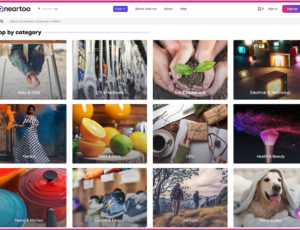Report: Scaling up customer service operations ahead of peak trading season

Mary Urquhart, senior contact centre manager at PFS, highlights why it is key for brands to scale up their operations and prioritise customer service.
As the shift to online shopping continues, retailers across all sectors face pressure to keep up with customer service demands. In fact, research by Zendesk reveals that following a peak in May, customer service requests remain well above pre-crisis levels. The way customers are reaching out to brands is also changing.
With many phone lines inundated, customers are turning to WhatsApp and other alternative channels to get in touch. Since last April, globally, WhatsApp use has increased by 148% since late February; the highest of any channel for customer service. This highlights the growing need for brands to adapt their customer service offering to keep up with the expectations of today’s consumer.
With UK eCommerce expected to continue growing by as much as £5.3bn in 2020, never has there been a greater need for brands to take a strategic approach to online customer care. Whilst throughout the pandemic, many online brands have been forced to keep up with the customer service demands associated with peak-like order volumes, ‘actual’ peak season is just around the corner. This will come as a true test for several online retailers, which, despite scaling up fulfilment operations, may not have considered the need for additional customer service support.
Customer service – a strategic priority
With preparations about to start for peak season trading, online brands must treat customer service as a strategic priority. A positive, personalised customer experience can make the difference between an abandoned cart and a lifelong customer. Lack of preparation risks customer dissatisfaction; damaging both reputation and the bottom line.
As sales continue to migrate online, brands will need to replicate the personalised and tangible in-store experience. For example, when entering a store, customers can expect to receive assistance and recommendations from staff when choosing products; something that can be sorely missing from the digital realm.
To support these types of queries, as well as the usual ‘where is my order?’, brands must have a robust customer care system in place; using either an in-house or outsourced operation. By doing so, brands can nurture the customer relationship to drive repeat sales and customer loyalty.
Variety will be key
Consumers are getting used to being able to purchase goods from a variety of different channels. They will expect to be able to reach out to brands via a range of platforms as a result.
Since lockdown began, there has been a surge in brands turning to mobile and social platforms to reach their customers. In May, Facebook was named as the latest channel to launch its very own shopping feature. TikTok, meanwhile, has been utilised by the likes of Amazon to drive beauty product sales. Brands using eCommerce and mCommerce platforms must ensure ultimate customer experience through a streamlined approach; offering phone, email, live chat, social listening as well as chatbot support.
Thanks to the wide reach of online shopping, it is also likely that your brand’s customer base will go beyond that of just the UK. In these cases, being able to offer customer care across international locations and providing multilingual agents will be crucial to providing seamless and personalised support.
Making the most of customer intelligence
Whilst language and platform preferences are important, ultimately the experience a brand can provide to a customer is only as good as that brand’s customer insight and order intelligence. By integrating your website and order management system, agents can leverage real-time order information. This means brands can respond quickly to customer queries, letting them know instantly exactly where their product is within the delivery chain.
Having access to customer insights can also enable brands to provide a much more efficient and personalised experience for customers. Having easy access to notes and contact history features equips agents with detailed customer information. This includes any previous contact, therefore enabling effective responses and negating repetition.
Using technologies such as Voice of the Customer (VOC) tracking and reporting to gather positive or negative customer feedback concerning a brand’s products or services can also be extremely useful. They help quality and product teams to better understand the customer – their wants and needs – to drive brand loyalty.
Saving time with customer self-service
Although a variety of contact avenues is essential to keep up with today’s customer, it is important to ensure that customers can find the answers they need without having to leave your website.
Customer self-service allows brands to provide online support to customers through a range of tools. For instance, online discussion forums and FAQ documents. The reality is, customers want their questions answered quickly. Often without having to necessarily interact with a representative from the brand. In fact, according to a report from Gartner, surveyed service leaders report that as much as 40% of today’s live volume could be resolved in self-service channels.
When online self-service tools are available, brands can ensure they are providing customers access to answers quickly. It will also save them time to focus on more complex requests and customer service issues.
Scaling up effectively
For many brands, rising contact volumes during peak periods can prove challenging. For some, it may be a lack of personnel, technology, or even the contact centre infrastructure. Often, an outsourced operation will prove to be a simpler and more cost-effective option.
By outsourcing your customer care function through a trusted provider that can act as an extension of your brand, online retailers can harness the scalability needed to meet volume fluctuations throughout the year. Having a flexible partner that can scale-up or scale-back depending on activity means that brands can be agile and ready to respond when needed.
Growth in 2020 is going to be a challenge for those who were not prepared for changes in demand and unable to scale within their existing models. Now is the time to act and prepare for unforeseen demand fluctuations, ahead of peak and Brexit. This year is a tough year for retailers but is equally filled with opportunity.












